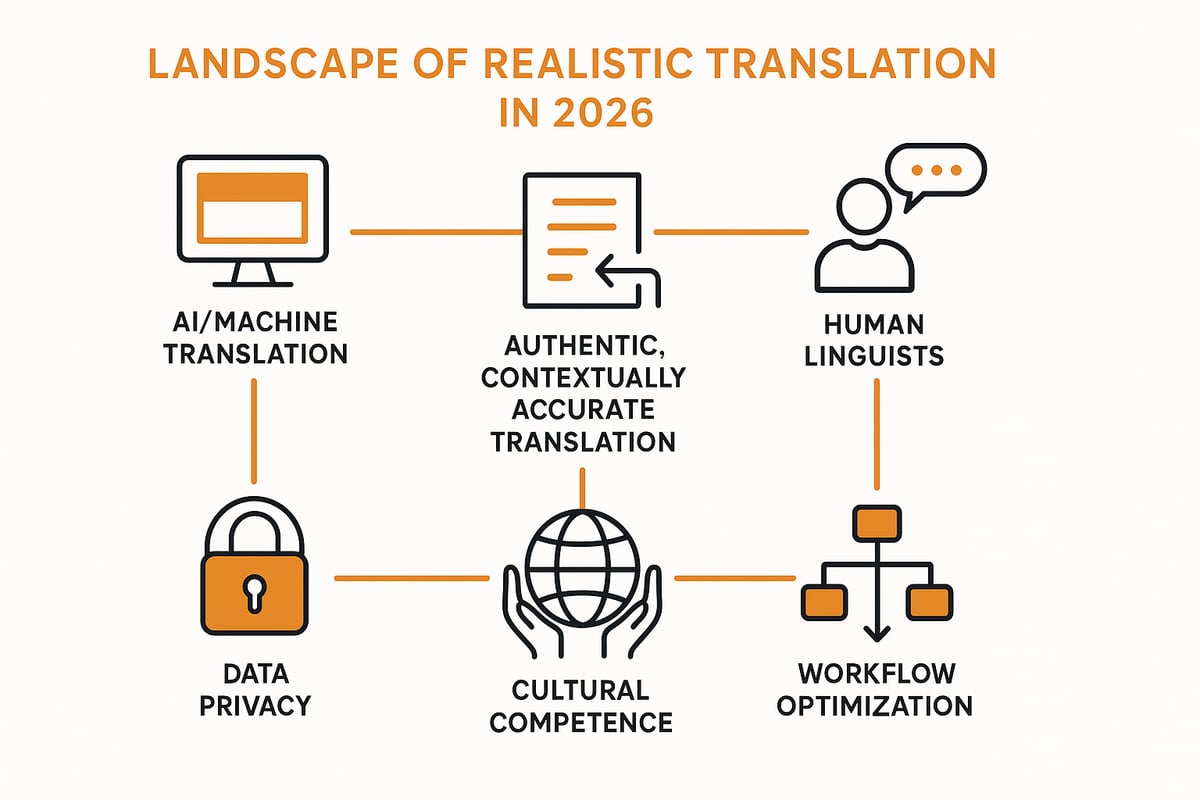This year at APCO 2025, we had dozens of conversations with emergency communications professionals...
The Language Access Awakening in Emergency Services

Recent industry conferences have marked a turning point in our conversations with emergency communications professionals. After four major trade shows, we're seeing something different—not just in our preparation or demos, but in how the industry approaches language access and communication barriers.
Here are the key insights that emerged from dozens of conversations with emergency communications professionals.
The Problem Recognition Shift
Perhaps the most significant observation was how awareness of language barriers has evolved. When we described scenarios like a cardiac arrest call from a Vietnamese speaker, the response wasn't academic interest—it was immediate recognition of situations they'd faced themselves.
Multiple professionals shared their own experiences with language barriers during emergency calls, reinforcing that this isn't an occasional challenge but a regular operational reality.
Technology Expectations Are Rising
The days of accepting "that's just how language services work" are ending. Based on our booth conversations, emergency communications professionals are increasingly demanding better user experiences from their language interpretation providers.
Frustrations we heard directly from conference attendees included:
- Access pin requirements that cause delays and errors
- Slow connection times to human interpreters
- Limited availability of trained emergency interpreters
As one professional told us, they were impressed that our service doesn't require access pins because "we always screw those up."
The Mobile Imperative
One of the strongest themes was the need for language interpretation capabilities beyond the call center. First responders consistently emphasized scenarios where they encounter language barriers in the field:
- Traffic stops involving non-English speakers
- Medical emergencies where family members can't communicate with paramedics
- Community policing situations requiring cultural sensitivity
- Multi-jurisdictional incidents with diverse populations
The ability to extend language interpretation to mobile devices and field operations was consistently mentioned as a critical capability for comprehensive emergency response.
AI Integration Without Disruption
Interestingly, while AI capabilities generated significant interest, the focus wasn't on revolutionary transformation. Instead, professionals wanted AI that enhanced existing workflows without requiring complete process overhauls.
The most compelling AI applications mentioned were:
- Real-time transcription that creates records while interpretation happens
- Conversation summarization that captures key emergency details automatically
- Language detection that eliminates guesswork about what language is being spoken
- Quality monitoring that helps supervisors ensure effective communication
The common thread was AI that makes existing processes faster and more reliable, rather than AI that requires learning entirely new workflows.
Accessibility as an Emerging Priority
One of the most forward-looking discussions centered around accessibility features, particularly for deaf and hard-of-hearing callers. Several professionals specifically asked about ASL interpretation capabilities.
As AI-generated avatar technology continues advancing, we see tremendous potential for real-time American Sign Language interpretation that could transform emergency access for the deaf community. This represents a natural evolution of language interpretation technology that could have profound impact across multiple industries beyond emergency services.
Procurement and Implementation Realities
Despite enthusiasm for new capabilities, the practical challenges of government procurement remain significant. However, several conference conversations revealed approaches that may accelerate adoption:
- Budget reallocation from existing language services rather than new budget requests
- Interest in pilot programs that allow testing before full deployment
- Regional cooperation models where multiple agencies collaborate
Beyond Emergency Services
Many conversations naturally expanded beyond 911 centers to discuss language barriers in related fields like healthcare emergency departments and corporate security operations. These discussions highlighted the broader applicability of language interpretation technology originally developed for emergency services.
The Competitive Landscape Evolution
Conference conversations revealed that traditional language service providers are being challenged by technology-forward companies. Emergency professionals we spoke with are increasingly evaluating providers based on speed of connection to qualified interpreters, integration capabilities with existing systems, and mobile accessibility for field operations.
Looking Ahead
APCO 2025 demonstrated that language access in emergency services is transitioning from a specialized add-on service to core communication infrastructure. The organizations that recognize this shift early and invest accordingly will be best positioned to serve their increasingly diverse communities effectively.
The technology exists to eliminate most current friction points in emergency language interpretation. The question now is how quickly the industry will adopt solutions that make language barriers a solvable problem rather than an accepted challenge.
For emergency communications professionals evaluating language interpretation capabilities, the key considerations have evolved beyond simple cost comparisons to include user experience, integration capabilities, and the potential for AI enhancement of traditional interpretation services.
The conversations at APCO 2025 left us optimistic about the future of language access in emergency services—and excited about the role technology can play in ensuring that language is never a barrier to getting help when it's needed most.
What trends are you observing in the industry? We'd love to hear your perspectives on how the emergency communications industry is evolving.



.png?height=200&name=The%20Path%20to%20Scale%20Solving%20Real%20Problems%20in%20Emergency%20Communication%20(1).png)
